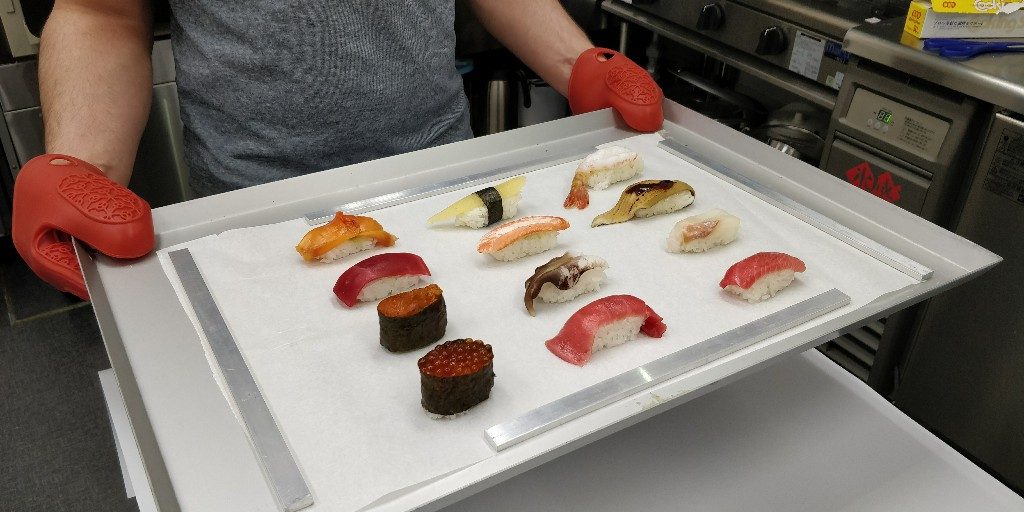Eating raw fish in dishes like sushi and sashimi has become increasingly popular in recent years. However, there are concerns about parasites and foodborne illnesses from consuming raw seafood. Fortunately, you can use flash freezing to kill any parasites and make fish safe to eat raw at home.
Why Freeze Fish for Sushi?
Freezing fish intended for raw consumption serves an important purpose – killing parasites. There are two main types of parasites that can infect fish:
-
Nematodes – Also known as roundworms, these thin worms can infect the intestines and cause nausea, vomiting, and diarrhea.
-
Flatworms – This includes tapeworms and flukes Tapeworms can grow several feet long in the intestines, while flukes are typically microscopic
The good news is that most fish parasites can be killed by flash freezing or storing at cold temperatures for an extended duration. This is why all sushi restaurants in the US are required by the FDA to freeze fish before serving raw.
How Cold and How Long?
To ensure parasites are killed, fish must be frozen solid to the optimal temperature and duration:
-
-4°F (-20°C) or below for 7 days – This is the FDA recommendation and standard for sushi restaurants
-
-31°F (-35°C) or below for 15 hours – Flash freezing at this ultra-low temperature kills parasites almost instantly.
Home freezers only cool to approximately 0°F (-18°C) at their lowest setting. To achieve sushi-grade freezing, you’ll need either a commercial freezer or dry ice.
Flash Freezing with Dry Ice
Dry ice is frozen carbon dioxide at -109°F (-78°C), making it perfect for flash freezing fish. Here is a simple process:
Supplies Needed
- Dry ice (about 5 lbs for a large fish fillet)
- Insulated cooler
- Freezer paper or aluminum foil
- Kitchen scale
- Long gloves for handling dry ice
Steps
-
Cut fish into appropriate sizes, such as fillets or thin slices.
-
Wrap fish pieces individually in freezer paper or foil
-
Weigh the package fish pieces. You want about 1 lb of dry ice per 1 lb of fish.
-
Add dry ice to the bottom of the cooler in a single layer.
-
Place wrapped fish on top of the dry ice layer. Don’t let fish touch each other.
-
Cover fish completely with another layer of dry ice.
-
Seal the cooler and leave for 24 hours. CO2 gas will vent from cooler.
-
After 24 hours, unwrap fish and place in freezer bags. Store in freezer at 0°F or below.
Following this process will flash freeze fish almost instantly, killing any parasites. The fish can be kept frozen for up to 2 months.
Other Tips for Sushi-Grade Fish
In addition to flash freezing, follow these tips when preparing fish for sushi or sashimi:
-
Bleed, gut, and ice the fish immediately after catching. Quick chilling helps quality.
-
Inspect the fish closely before eating raw. Discard any with holes, blemishes, or discoloration.
-
Clean tools, cutting boards, etc thoroughly to avoid cross-contamination.
-
For safety, cut fish into thin slices to easily see any parasites.
-
Opt for fatty fish like salmon and tuna which are naturally lower in parasites.
-
Avoid using fish from higher risk sources like freshwater or fish farms.
Storing and Thawing Fish
Once fish has been properly frozen, follow these guidelines for storing and thawing:
-
Store frozen fish wrapped in freezer bags at 0°F or below for 1-2 months maximum.
-
Thaw fish overnight in the refrigerator. Do not thaw at room temperature.
-
Cook thawed fish immediately, don’t refreeze. Quality degrades with each freeze.
-
If storing thawed fish longer than overnight before cooking, keep refrigerated for no more than 2 days.
By flash freezing using dry ice and storing fish properly, you can enjoy sushi, sashimi, ceviche, and other raw fish dishes safely at home. Always inspect fish closely and exercise care when handling raw seafood. Enjoy the delicious fresh taste of home-prepared sushi!

Can You Refreeze Fish for Sushi?
Can you freeze fish for sushi?
And while freezing your own fish in your home refrigerator may seem better than nothing, slow-frozen fish does not make good sushi. When ice crystals form slowly, they grow large and rupture cell walls, forcing the flesh to release all of its liquid and flavor. The best way to freeze fish for sushi is an ultra-cold flash freezer.
Is flash frozen sushi a thing?
If it’s a reputable place selling it, it usually just means a very high quality cut of fish, so to some extent it is a thing even that it isn’t regulated. Unless things changed recently, all sushi in the US must be flash frozen except for tuna and even that is usually flash frozen (it does kill most parasites though).
How long can you freeze sushi-grade fish?
On the other hand, if you’re in a hurry and want to eat sushi-grade fish in the safest possible manner, you can freeze it for about 15 hours at -31° F. If you maintain optimal temperatures throughout, you can even keep the frozen fish for years. However, there are differences when it comes to what type of fish should be frozen.
Can sushi be frozen?
It’s a safe bet that anything sold as “sushi-grade” has followed FDA guidelines for freezing, even if there is no legal mandate to do so. But at the exorbitant cost of most sushi-grade items, you might be better off just buying the sushi from a restaurant!
